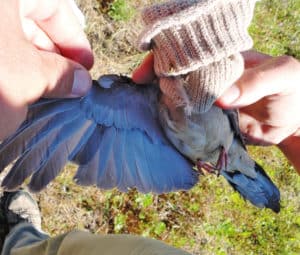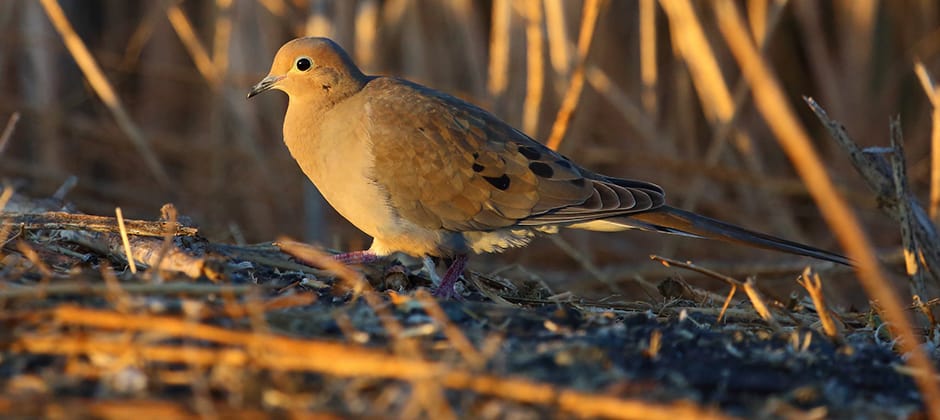Share this article
Intensive agriculture decreases mourning dove reproduction
Mourning doves are a common species throughout much of the United States, but researchers found that intensive agricultural production could be causing their reproduction to decline.
“A lot of papers coming out now are showing that bird distributions are changing and bird abundances are changing, said David Muñoz, a graduate research fellow at Penn State University and lead author of the study published in The Condor: Ornithological Applications. “It’s not only happening for our rare species but our common species as well.”
Muñoz and his colleagues decided to study the mourning dove (Zenaida macroura) since it’s a common hunted species, with a lot of U.S. Fish and Wildlife Service data available from hunter harvest and banding. It’s “common species people love to see in their backyard bird feeders and also one of the most widely hunted game birds that has social and economic importance as well,” he said.

Researchers used mourning doves’ wings submitted by hunters to determine their age, which helped them estimate reproductive output. ©David Muñoz
Muñoz and his colleagues wanted to see how intensive agriculture — involving more chemical inputs, more mechanization and larger farms — affected mourning dove reproduction. Looking at ages of the birds based on molt patterns of feathers sent in by hunters, they developed an age ratio that helped them determine reproduction output. To compare farming methods, the team used corn and soy production as an indicator of intensive farming, compared with crops like oats, alfalfa and wheat, whose production has declined during intensification.
Dividing the areas they studied into western, central and eastern management units, they looked at how different levels of farming intensity impacted age ratios and how developed areas within dove habitat impacted age ratios.
For the eastern United States, they found, corn and soy farming negatively affected reproduction. For most of the country, smaller grain production actually had a positive effect, though. The difference may be tied to their food resources, Muñoz said. Small grains are prized food items for the doves, he said, but the birds don’t prefer corn and rarely eat soy beans.
But as the team looked at each region, they found differences that didn’t carry over. Central and western units have seen more dove declines than the eastern unit. Muñoz believes low reproduction in the central and western units and higher reproduction in the Southeast may be the cause. But the East showed a stronger relationship between dove declines and corn and soy production. In the West, they found development benefited the birds, which often nest in urban and suburban areas. Some of the regional differences may be related to water use, he said, since intensive farming uses different irrigation systems in different parts of the country.
“It makes it hard to generalize broad patterns,” Muñoz said.
Muñoz said this may make it easier for managers to think about how and where to improve reproductive habitat. “This is the first step in providing some context and information for wildlife managers on how to influence mourning dove reproduction,” he said.
Header Image: Grain production often benefits mourning doves, but intensive agriculture may cause their reproduction to decline. ©Don McCullough








